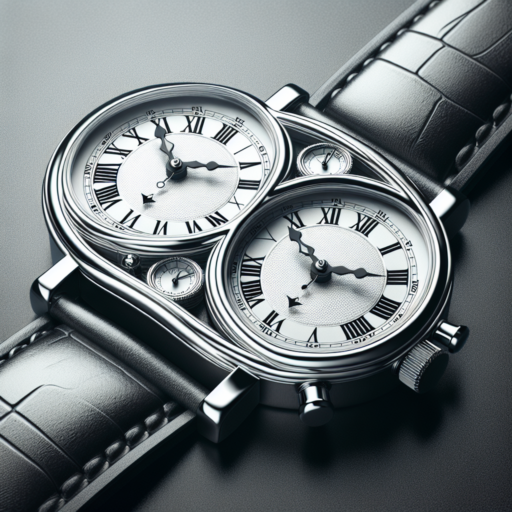What is a Chest Band Heart Monitor and How Does It Work?
A chest band heart monitor, often regarded as a crucial tool for athletes and fitness enthusiasts, serves the primary purpose of tracking the heart rate in real-time. Unlike wrist-worn devices, a chest band heart monitor wraps around the midsection, sitting snugly just below the chest muscles. This positioning allows for more accurate readings, as it’s closer to the heart compared to other types of fitness trackers. The core component of this device is a small electronic sensor pad that detects each heartbeat and transmits the data wirelessly to a connected device, such as a smartphone or a dedicated display on fitness equipment.
How Does It Work?
The operational principle behind a chest band heart monitor hinges on electrical signals that are generated every time the heart beats. When the heart contracts, it sends out an electrical impulse that can be detected by the monitor’s sensor. This sensor then captures these impulses, converts them into a readable heart rate data, and transmits this information in real-time. The transmitted data can be used not just for immediate feedback during a workout, but also for analyzing overall heart health and fitness levels over time.
To ensure the device functions correctly, it’s essential for the chest band to maintain good contact with the skin. This is usually achieved through the use of conductive gel or water, which helps in enhancing the sensor’s ability to detect the heart’s electrical signals. Moreover, the advancement in technology has led to the development of models that can monitor other vital signs, sucha as breathing patterns and calorie consumption, offering a more comprehensive overview of the wearer’s physical condition during exercise.
Understanding the functionality and benefits of a chest band heart monitor allows individuals to optimize their training regimen by closely monitoring their heart rate zones. This results in more effective and safe workouts, ensuring that enthusiasts and athletes alike can achieve their fitness goals without overexerting themselves.
The Benefits of Using a Chest Band Heart Monitor for Your Workouts
Maintaining an optimal heart rate during your workouts is essential for fitness enthusiasts seeking to maximize their exercise efficiency and safety. The use of a chest band heart monitor offers a range of benefits that can significantly enhance your physical activity routine. Below, we discuss the key advantages of integrating this valuable tool into your workouts.
Accurate Heart Rate Monitoring
One of the primary benefits of using a chest band heart monitor is the accuracy it provides. Unlike wrist-worn devices, chest bands measure electrical signals from the heart, offering a more precise reading of your pulse. This accuracy is crucial for tailor-fitting your exercise intensity, ensuring you’re not overexerting yourself or not pushing hard enough, thereby optimizing your workout sessions for better health and performance outcomes.
Enhanced Workout Efficiency
With real-time feedback on your heart rate, a chest band monitor allows you to adjust your effort on the fly, making your workouts more efficient. By staying within the ideal heart rate zones for your fitness goals—whether it’s fat burning, endurance improvement, or strength training—you can make every minute of your exercise count. This efficiency not only helps in achieving your fitness objectives more quickly but also reduces the risk of burnout and injury associated with unguided exertion levels.
Seamless Connectivity and Integration
Most modern chest band heart monitors offer seamless connectivity with other devices and apps, providing a streamlined experience for tracking your workouts and progress. This integration enables you to store your workout data, analyze trends over time, and adjust your training plans accordingly. By having access to detailed insights about your heart rate patterns, you can further personalize your exercise regimen, leading to improved overall fitness and well-being.
Top Picks: The Best Chest Band Heart Monitors of the Year
When searching for the most reliable and accurate ways to monitor your heartbeat during intense workouts, chest band heart monitors stand out for their precision and consistency. This year’s top picks include an array of models designed to meet the needs of athletes and fitness enthusiasts alike, offering features like real-time data, comfortable design, and seamless connectivity with various fitness apps and devices.
Key Features to Consider
Before diving into our top selections, it’s crucial to understand what makes a chest band heart monitor a worthy investment. The best models often boast superior battery life, water-resistant designs, and the ability to provide accurate heart rate measurements even in the most demanding physical activities. Additionally, compatibility with other devices and user-friendly interfaces enhance the training experience by allowing you to easily track and analyze your performance over time.
Our examination of the market’s leading options revealed that several models consistently outperform their competitors. Among these, brands like Polar and Garmin have introduced units praised for their accuracy, comfort, and the extensive data they provide. These monitors not only track your heart rate but also give insights into workout intensity, calories burned, and even offer training guidance to maximize your fitness routine.
In conclusion, as we entered this year with fitness resolutions and goals, choosing the right chest band heart monitor could be the key to achieving and surpassing those ambitions.
How to Choose the Right Chest Band Heart Monitor for Your Fitness Goals
Choosing the right chest band heart monitor is a critical decision for optimizing your fitness routine. Whether you’re a committed athlete or a casual fitness enthusiast, the accuracy and comfort of a chest band heart monitor can significantly affect your workout efficiency and health monitoring. When selecting the ideal heart monitor, consider the device’s compatibility with your existing fitness gadgets, its sensor accuracy, and the comfort it offers during vigorous activities.
Compatibility with your smartphone or fitness watch is paramount. Many modern chest band heart monitors seamlessly integrate with other devices, providing real-time data that can help you adjust your workout intensity on the fly. Ensure the heart monitor you choose supports the same connectivity options, such as Bluetooth or ANT+, as your existing fitness devices. This harmony between devices will enhance your training experience by providing a cohesive view of your performance data.
Another vital factor is the sensor accuracy of the chest band. Heart monitors that use high-quality sensors are capable of delivering precise heart rate measurements, which are essential for training within specific heart rate zones. Accurate data not only helps in maximizing workout results but also in preventing overtraining and potential injury. For those serious about their fitness goals, a chest band that promises minimal lag and high accuracy is indispensable.
Last but not not least, consider the comfort and fit of the chest band. A monitor that is too tight or too loose can be distracting, or worse, ineffective. Look for adjustable straps and soft materials that stay secure and irritation-free throughout your workout. Remember, a heart monitor should fit so well that you barely notice it’s there, allowing you to focus solely on your fitness goals.
Setting Up Your Chest Band Heart Monitor: A Step-by-Step Guide
Setting up your chest band heart monitor is a straightforward process that can be completed in just a few simple steps. Whether you are a seasoned athlete looking to optimize your training or someone interested in tracking their heart health more closely, having your heart monitor properly set up is essential. This guide will walk you through everything you need to get started.
Choosing the Right Position for Your Chest Band
Your heart monitor chest band should be positioned just below the chest muscles for optimal accuracy. The positioning is crucial as it directly impacts the device’s ability to accurately read your heart’s electrical signals. An incorrect placement could result in inaccurate data, which is why securing the band snugly, yet comfortably, right below the pectoral muscles is recommended.
Moistening the Electrodes
Before fastening the chest band, ensure the electrodes–the parts of the band that physically touch your skin–are slightly moist. This can significantly improve the connectivity and the accuracy of the heart rate readings. You can use water or a conductive gel, if recommended by the manufacturer. This simple step can make a big difference in the performance of your heart monitor.
Once properly positioned and the electrodes moistened, fasten the chest band so it’s tight enough to stay in place during activity, but not so tight that it causes discomfort. Remember to regularly clean your chest band according to the manufacturer’s instructions to maintain its accuracy and prolong its life. With these easy steps, you’ll be ready to track your heart rate effectively during any activity or workout.
Chest Band vs. Wrist Heart Rate Monitors: Which One Should You Choose?
Deciding between a chest band and a wrist heart rate monitor can significantly impact your fitness journey and goals. Each type of monitor has its unique set of advantages and considerations. Understanding these differences can help you make an informed decision tailored to your personal needs and fitness routine.
Accuracy Levels
When it comes to precision, chest band heart rate monitors generally offer higher accuracy. They measure heart rate directly from the chest, close to the heart, thus providing readings that are nearly EKG-level in their precision. This is particularly beneficial for serious athletes or individuals who require detailed monitoring for health reasons. On the other hand, wrist heart rate monitors, which rely on optical sensors to detect blood flow, are more prone to discrepancies caused by movements or improper fit, though advancements in technology have seen their accuracy improve significantly.
Comfort and Convenience
The choice between chest bands and wrist monitors also significantly hinges on personal comfort and how convenient the device is to wear and use during various activities. Wrist monitors score high on convenience, being easy to wear all day and generally more comfortable for continuous use. They fit into everyday life seamlessly, doubling as watches and, in many cases, as smart devices that provide notifications and other functionalities. Chest bands, while not as comfortable for all-day wear, are often seen as more bearable during short periods of intense exercise where their accuracy and lesser likelihood of shifting prove advantageous.
Maximizing Your Training: Tips for Getting the Most Out of Your Chest Band Heart Monitor
Utilizing a chest band heart monitor effectively can enhance your training sessions significantly, providing insights that allow you to adjust your efforts in real time. To truly maximize the benefits of this essential tool, there are a few tips and tricks that can aid in fine-tuning your approach to workouts. By being mindful of how you integrate your heart monitor into your training regime, you can not only improve your endurance and performance but also ensure your sessions are as efficient as possible.
Understand Your Heart Rate Zones
First and foremost, it’s crucial to have a clear understanding of your heart rate zones. These zones vary from person to person and are indicative of different intensity levels during exercise. By familiarizing yourself with these zones, you can tailor your workouts to target specific outcomes – whether that’s fat burning, endurance improvement, or strength training. Adjusting your effort to stay within the right zone can make all the difference in achieving your fitness goals efficiently.
Calibrate Your Device Accurately
Another key aspect of leveraging your chest band heart monitor to its full potential is ensuring it’s calibrated correctly for your personal statistics. Incorrect calibration can lead to misleading data, which might result in training that is either too intense or not intense enough. Taking the time to set up your device accurately, including entering your age, weight, and height, enables the heart monitor to provide more precise feedback, allowing for more targeted and effective workouts.
Last but not least, consistency in wearing your chest band heart monitor is vital. For the device to contribute positively to your training outcomes, it needs to become a non-negotiable part of your workout gear. This regularity ensures that over time, you can gather data to track your progress comprehensively, helping to identify trends, improvements, or areas that need attention. Remember, the goal is to use this tool to inform and inspire your training journey, making every heartbeat count towards your success.
No se han encontrado productos.
Understanding Your Heart Rate Data: What Your Chest Band Heart Monitor Can Tell You
When it comes to optimizing your fitness routine, understanding the data your chest band heart monitor provides is invaluable. These devices, strapped around your chest, measure your heart rate with remarkable accuracy, offering a window into your body’s cardiovascular health and exercise performance. By interpreting this data correctly, you can tailor your workouts for maximum efficiency and safety.
Heart Rate Zones and What They Indicate: Each heart rate zone unveils a different aspect of your cardiovascular fitness. For instance, staying within a moderate heart rate zone, typically 50-70% of your maximum heart rate, is ideal for fat burning and improving basic endurance. Whereas, pushing into higher zones, from 70-85% of your maximum, can significantly enhance cardiovascular and respiratory strength. Your chest band heart monitor’s data assists in identifying which zone you are exercising in, enabling a strategic approach to training and recovery.
Your heart rate data is a profound indicator of your workout’s intensity. Variations in heart rate during and after exercise can reveal your body’s response to the workout. An abrupt increase in heart rate could signal overexertion, whereas a slow decrease post-exercise might indicate improving cardiovascular recovery. By analyzing patterns over time, you can discern not just your progress but also understand your body’s signals for optimizing workouts and preventing injury.
Troubleshooting Common Issues with Chest Band Heart Monitors
When it comes to maintaining optimal performance of chest band heart monitors, users often encounter several common issues that can affect their accuracy and comfort. Understanding and addressing these issues can enhance your workout experience and ensure you’re getting the most accurate data regarding your heart rate.
Ensuring Proper Fit and Positioning
One of the primary challenges faced by users is ensuring the chest band is fitted properly. A band that is too loose may not consistently detect your heart’s signals, while one that’s too tight can be uncomfortable during long exercise sessions. To troublicate this, make sure the band is snug but not constricting. The correct positioning is also crucial; the band should sit just below the chest muscles. Adjusting the positioning slightly can often resolve many signal issues.
Dealing with Moisture and Connectivity Issues
Moisture and connectivity are two interconnected factors that can significantly impact the performance of your chest band heart monitor. For optimal conductivity, the electrodes on the band should have a slight moistness. This can be achieved by wetting them before use. However, too much sweat can lead to slippage or loss of signal. Regular cleaning of the band according to the manufacturer’s instructions will prevent salt from sweat building up, which can also disrupt connectivity.
Maintaining Battery Life and Signal Integrity
The battery life of your chest band heart monitor is essential for consistent performance. Weak batteries can cause erratic heart rate readings or signal loss. Always ensure your device is fully charged or has fresh batteries, depending on the model. Additionally, signal interference from other devices can be an issue, especially in gym environments where multiple devices are in use. Try to keep your smartphone or other connected devices within a close range but not directly on your body to reduce potential interference.
Integrating Your Chest Band Heart Monitor with Fitness Apps and Trackers
Integrating your chest band heart monitor with your preferred fitness apps and trackers can transform your workout routine, offering a more personalized and detailed insight into your physical activity. This synchronization allows for a comprehensive view of your heart rate patterns, helping you to optimize your exercise regimen for the best results. Whether you are a seasoned athlete or a fitness enthusiast, understanding the process and benefits of this integration is crucial for enhanced workout performance.
The first step in this integration process involves ensuring compatibility between your chest band heart monitor and the fitness apps or trackers you wish to connect. Most leading brands design their devices to be compatible with a wide range of applications, promoting an easy setup. Once compatibility is confirmed, the synchronization process typically involves connecting the devices via Bluetooth or a specific mobile app provided by the heart monitor manufacturer. This seamless connection not only offers real-time heart rate data but also stores historical data for progressive monitoring.
Beyond the basic setup, customizing the settings to suit your specific fitness goals can greatly enhance your training sessions. This might involve setting heart rate zones, which are essential for targeted training regimens like fat burning, cardio, and peak performance exercises. Fitness apps that are successfully integrated with your heart monitor can alert you when you need to adjust your intensity to stay within your desired heart rate zone, making your workouts more efficient and tailored to your personal health objectives.




